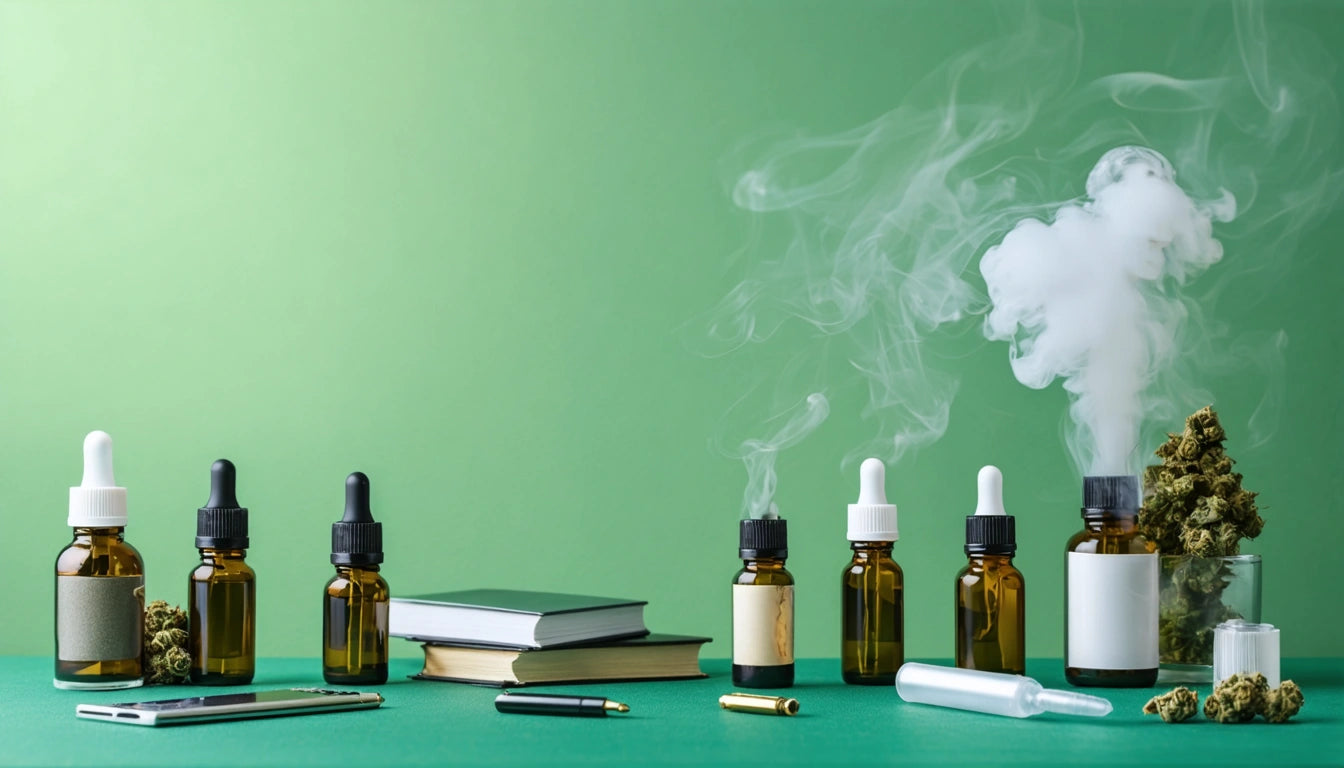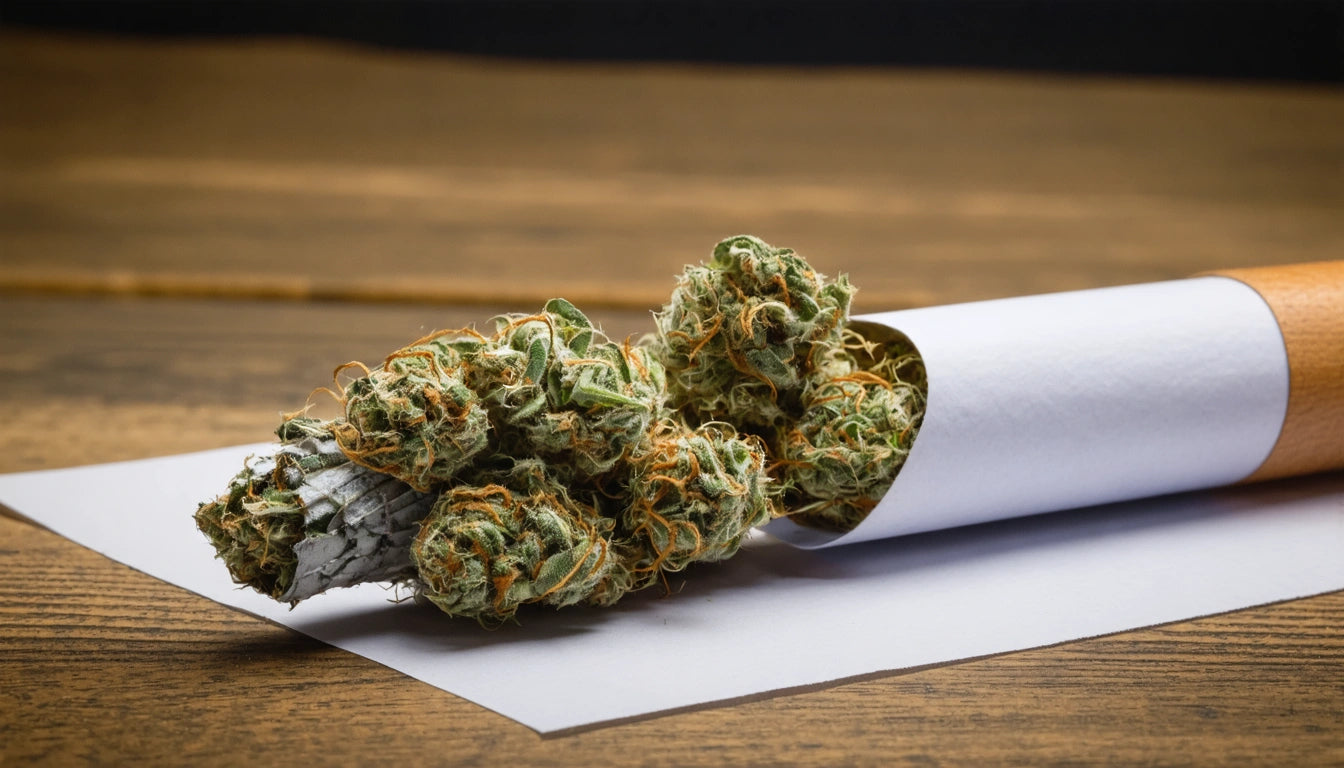Table of Contents
The debate between vaping and smoking cannabis centers on health impacts, consumption experience, and long-term effects. As cannabis use becomes more mainstream, consumers increasingly question which method offers the safer experience while still delivering desired effects.
Health Impact Comparison: Vaping vs. Smoking Cannabis
When comparing vaping to smoking cannabis, the fundamental difference lies in the heating method. Smoking involves combustion, which occurs at temperatures exceeding 900 °F, creating numerous byproducts including tar, carbon monoxide, and various carcinogens. Vaping, by contrast, heats cannabis oil or flower at lower temperatures (typically 320-430 °F), which may reduce exposure to harmful combustion byproducts.
Research suggests that vaping produces fewer toxic compounds than smoking. A 2007 study published in the Harm Reduction Journal found that vaporizers can reduce respiratory symptoms in regular cannabis users compared to smoking. However, this doesn't necessarily mean vaping is completely safe.
Potency Considerations
Vape cartridges often contain concentrated forms of cannabis that can reach significantly higher THC levels than flower. Dab carts are typically stronger than smoking flower, with concentrations potentially reaching 80-90% THC compared to flower's average of 15-25%. This increased potency can lead to stronger effects and potentially higher tolerance development.
Respiratory Effects and Lung Health Considerations
The respiratory impact represents one of the most significant differences between these consumption methods. Smoking cannabis produces tar and particulate matter that can irritate the lungs and respiratory tract. Regular cannabis smokers often report symptoms such as chronic cough, phlegm production, and bronchitis.
Vaping may reduce these specific respiratory issues by eliminating combustion. However, vaping comes with its own set of concerns, particularly regarding what's in a cannabis vape cartridge. Some cartridges may contain cutting agents, such as vitamin E acetate, which has been linked to serious lung injuries.
Product Quality and Safety Factors
The safety of vaping cannabis is heavily dependent on product quality. Regulated market vape products undergo testing for contaminants, whereas illicit market products may contain harmful additives or residual solvents.
Cartridge Components and Materials
Quality vape cartridges use food-grade materials and undergo testing for heavy metals and other contaminants. The hardware components, including the proper storage containers and protective caps similar to those used for cannabis products, are designed to prevent leaching of harmful substances into the oil.
When considering whether vape carts are safe to use daily, product quality becomes even more crucial. Regular use of contaminated products compounds potential health risks.
Extract Types and Processing Methods
The type of cannabis extract used in vape products also impacts safety. Distillate, live resin, and rosin carts differ in their extraction methods and additional ingredients:
- Distillate: Highly refined, often containing added terpenes
- Live resin: Preserves natural plant compounds, less processing
- Rosin: Solventless extraction, minimizing potential contaminants
Products processed without solvents or with properly purged solvents generally present fewer health concerns.
Proper Use Guidelines for Safer Consumption
Regardless of whether vaping is inherently safer than smoking, proper use significantly impacts overall safety. Users should follow manufacturer guidelines for temperature settings and avoid overheating, which can create harmful compounds.
Maintenance and Storage
Proper maintenance and storage of vape equipment are essential for safety. Storing dab carts properly not only preserves freshness and potency but also prevents degradation that could create harmful compounds.
Users should regularly check their equipment for damage and follow proper cleaning procedures. Cartridges that appear discolored, have crystallization, or show signs of leakage should be discarded, as these could indicate that a vape cartridge has gone bad or expired.
Authenticity Verification
Counterfeit vape products represent a significant safety concern. Learning how to spot fake or counterfeit vape cartridges is crucial for consumer safety. Authentic products from licensed manufacturers undergo testing and quality control measures that illicit products typically lack.
Indicators of counterfeit products include:
- Inconsistent packaging or labeling
- Missing test results or batch numbers
- Unusually low prices
- Packaging without child-resistant features
- Oil that moves too quickly or appears unusually colored
Safety Recommendations and Best Practices
For consumers prioritizing safety while still enjoying cannabis, several best practices can minimize potential risks:
First, purchase products only from licensed, reputable sources that provide comprehensive test results. These tests should screen for pesticides, heavy metals, residual solvents, and microbial contaminants.
Second, start with lower temperatures when vaping to reduce the formation of potentially harmful compounds. Most quality vaporizers offer temperature control settings that allow users to find an optimal balance between vapor production and safety.
Third, consider the frequency of use. Regular, heavy use of any cannabis consumption method may increase health risks. Moderation and mindful consumption are key components of a safer experience.
Finally, stay informed about product recalls and emerging research. The cannabis industry and our understanding of its health impacts continue to evolve rapidly. What we know about the relative safety of vaping versus smoking may change as more research becomes available.
While current evidence suggests that vaping may reduce some health risks associated with cannabis combustion, it introduces others that vary based on product quality, user behavior, and individual health factors. The safest approach combines informed product selection with responsible consumption practices.











Leave a comment
All comments are moderated before being published.
This site is protected by hCaptcha and the hCaptcha Privacy Policy and Terms of Service apply.